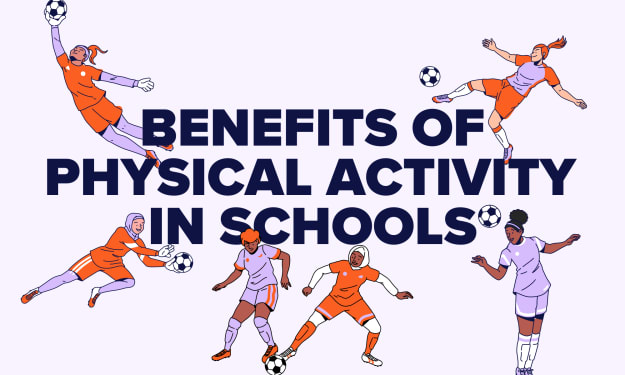The Benefits of Physical Activity in Schools
Enhancing Academic Performance

Physical activity is an essential component of a healthy lifestyle, and its importance in school education cannot be overstated. The benefits of physical activity in schools extend beyond the playground, significantly impacting students' academic performance, mental well-being, and social skills.
This article explores how integrating sports and physical activities into the school curriculum can enhance academic performance and overall student development. Read more at https://blog.edu123.in/top-10-benefits-of-physical-activity-in-schools/
The Link Between Physical Activity and Academic Performance
Recent studies have shown a strong correlation between regular physical activity and improved academic performance. Physical activity stimulates brain function, enhances cognitive abilities, and improves concentration and memory, all of which are crucial for academic success. The benefits of physical activity in schools are manifold, influencing various aspects of student life and learning.
Cognitive Benefits
1. **Improved Concentration and Focus**: Physical activity increases blood flow to the brain, which enhances cognitive function. Students who engage in regular physical activity tend to have better concentration and can focus more effectively on their studies. This increased attention span directly contributes to improved academic performance.
2. **Enhanced Memory and Learning**: Exercise has been found to boost the production of brain-derived neurotrophic factor (BDNF), a protein that supports the growth and development of brain cells. Higher levels of BDNF are associated with better memory and learning capabilities, showcasing the benefits of physical activity in schools.
3. **Increased Cognitive Flexibility**: Engaging in physical activities, especially those requiring coordination and strategic thinking, helps develop cognitive flexibility. This ability to adapt to new information and think creatively is essential for problem-solving and critical thinking skills, which are vital for academic success.
Mental and Emotional Benefits
4. **Reduced Stress and Anxiety**: The school environment can be stressful for many students, with academic pressures and social challenges taking a toll on their mental health. Physical activity is a natural stress reliever, releasing endorphins that elevate mood and reduce anxiety. The benefits of physical activity in schools include fostering a positive and relaxed mindset, which is conducive to learning.
5. **Improved Self-Esteem and Confidence**: Participation in sports and physical activities helps students build self-esteem and confidence. Achieving personal fitness goals or excelling in a sport can boost a student's self-worth, which positively impacts their academic pursuits. Confident students are more likely to participate actively in class and take on leadership roles.
6. **Better Sleep Patterns**: Regular physical activity helps regulate sleep patterns, ensuring students get adequate rest. Quality sleep is essential for cognitive function, memory consolidation, and overall well-being. The benefits of physical activity in schools include promoting healthy sleep habits that support academic performance.
Social and Behavioral Benefits
7. **Enhanced Social Skills**: Sports and physical activities often involve teamwork, communication, and cooperation. Students who participate in these activities develop better social skills, learning to work effectively with others. These skills are transferable to the classroom, where collaborative projects and group discussions are common.
8. **Positive Behavior and Discipline**: Physical activity instills a sense of discipline and responsibility in students. Adhering to training schedules, following rules, and striving for personal bests teach students valuable life lessons about perseverance and dedication. The benefits of physical activity in schools also include reduced behavioral issues and improved classroom conduct.
Academic Integration of Physical Activity
9. **Active Learning Strategies**: Integrating physical activity into academic lessons can make learning more engaging and effective. For instance, incorporating movement-based activities, such as educational games or kinesthetic learning techniques, helps reinforce academic concepts while keeping students physically active.
10. **Structured Physical Education Programs**: Schools that implement well-structured physical education programs provide students with regular opportunities to engage in physical activity. These programs should be designed to cater to all students, regardless of their athletic abilities, ensuring that everyone can experience the benefits of physical activity in schools.
About the Creator
Enjoyed the story? Support the Creator.
Subscribe for free to receive all their stories in your feed. You could also pledge your support or give them a one-off tip, letting them know you appreciate their work.





Comments
There are no comments for this story
Be the first to respond and start the conversation.